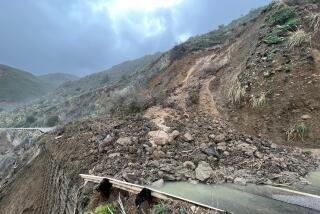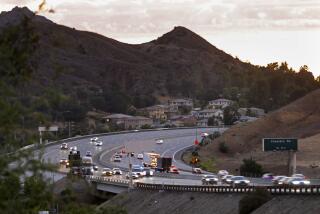Editorial: The end of an Orange County toll road war
There are few development fights in California that have been as prolonged or contentious as the plan to build the Foothill South toll road across southern Orange County. No wonder: The proposed extension of State Route 241 would have plowed a six-lane superhighway from Rancho Santa Margarita through the middle of a private nature preserve, across an ancient Native American village and through San Onofre State Beach, taking out a popular campground and threatening the world-famous Trestles surf break.
It’s hard to imagine how planners for the Transportation Corridor Agencies, which builds and operates Orange County’s toll road system, could have devised a more environmentally damaging route. The opposition was so vehement, and the toll road agency so committed to the project, that it seemed the fight would never end.
But it did earlier this month. The agency announced that it would never build the controversial route, ensuring the permanent protection of San Onofre State Beach and other sensitive environmental and cultural resources in the area. The deal was part of a settlement to end several lawsuits filed by the California attorney general and a coalition of environmental groups that sought to block the project.
The settlement calls for the toll road agency to rescind its 2006 approval of the controversial 16-mile route that would have connected the Foothill tollway to Interstate 5 south of San Clemente. That route was considered dead in 2008, after the California Coastal Commission rejected the road and the Bush administration — no ally of environmentalists — rejected the agency’s appeal, noting that there were other reasonable routes the toll road could take.
The agency will also revoke its 2013 approval of the proposed 5½-mile toll road extension to the outskirts of San Juan Capistrano, which officials said was a standalone project but environmentalists feared was a backdoor attempt to resurrect the route through San Onofre.
The settlement allows the toll road agency to move forward with environmental studies on other routes to connect the Foothill toll road to Interstate 5, and the environmental groups pledged not to oppose any extension project that avoids the parkland, habitat and cultural sites protected through the agreement. That was a priority for transportation planners who are looking for ways to help alleviate congestion on a notoriously packed section of I-5. Construction of a new freeway should not be a slam dunk for other reasons, such as the risk of opening more areas to urban sprawl, and the new environmental study should seriously consider ways to reduce congestion, including more transit and rail projects.
But for now, let’s be thankful that there will not be a toll road built through a state park, and that even the most unwavering opponents can sometimes put aside their strident positions and forge a path toward progress.
Follow the Opinion section on Twitter @latimesopinion and Facebook
More to Read
A cure for the common opinion
Get thought-provoking perspectives with our weekly newsletter.
You may occasionally receive promotional content from the Los Angeles Times.






